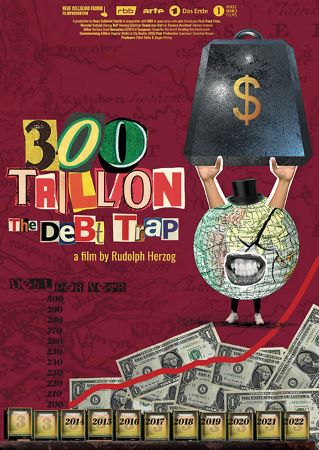
300 Trillion: The Debt Trap 2022
Distributed by Docuseek2
Produced by Jürgen Kleinig
Directed by Rudolph Herzog
Streaming, 80mins
K-12
Economics
Date Entered: 11/02/2023
Reviewed by Michael J. Coffta, Business Librarian, Bloomsburg University of PennsylvaniaThe introduction of 300 Trillion: The Debt Trap grabs the audience's attention with shocking macroeconomic figures. In 2022, the global cumulative debts of nations surpassed $300 trillion. Skillfully, the film makers illustrate what an unfathomable number this represents. The film shifts from the macro-level to the personal level quite often. The audience tours opulent settings of the super-rich with no regard for debt, and returns to the national level, examining Argentina's perennial and crippling debt and inflation. While the film examines those nations that were hit particularly hard by the 2008 Financial Crisis, the film takes an upbeat swing by looking at those countries that managed to suffer minimally and why.
The filmmakers return to a series of vignettes, ranging from the commonplace debt of landlords and tenants, to the absurd measures that some have used to repay personal or household debt, or at least remain solvent. There is, however, a conspicuous lack of demonstration of the causal relationship between consumer debt and national debt. Nevertheless, the film is remarkably engaging. It fills in gaps of assumptions that the audience, perhaps, does not realize it made. To whom does Argentina owe money? Who owes money to the US? What countries borrowed money from China in order to build the Chinese "New Silk Road"? How has China leveraged debt throughout the world? The film draws to a close with observations of inequalities of wealth, and concludes with rather vague suggestions, such as, "The world must act in everybody's interest."
300 Trillion: The Debt Trap is a timely and powerful work. It is thought-provoking and stirs one's soul with sobering realities and alarming trends. It consistently poses questions that will stimulate discussions among viewers.Published and licensed under the Creative Commons Attribution 4.0 license. Anyone can use these reviews, so long as they comply with the terms of the license.